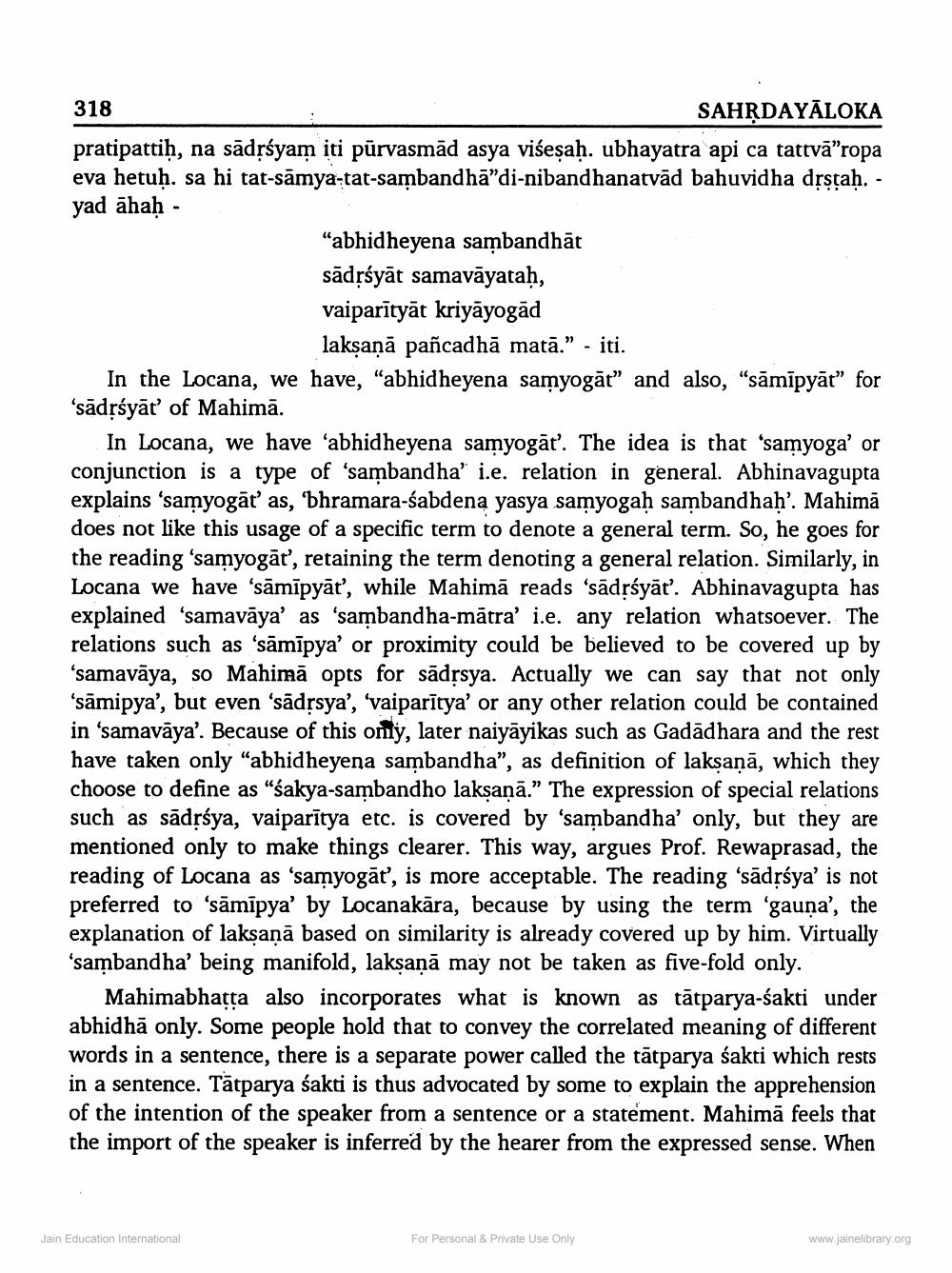________________
SAHṚDAYĀLOKA
pratipattiḥ, na sādṛśyam iti pūrvasmād asya viśeṣaḥ. ubhayatra api ca tattvā❞ropa eva hetuḥ. sa hi tat-samya-tat-sambandhā"di-nibandhanatvād bahuvidha dṛṣṭaḥ. - yad āhaḥ -
318
"abhidheyena sambandhāt sādṛśyāt samavāyataḥ,
vaiparītyāt kriyāyogād
lakṣaṇā pañcadhā matā." - iti.
In the Locana, we have, "abhidheyena samyogāt" and also, "sāmīpyāt" for 'sādṛśyāt' of Mahimā.
In Locana, we have 'abhidheyena samyogat'. The idea is that 'samyoga' or conjunction is a type of 'sambandha' i.e. relation in general. Abhinavagupta explains 'samyogāť' as, 'bhramara-śabdena yasya samyogaḥ sambandhaḥ'. Mahimā does not like this usage of a specific term to denote a general term. So, he goes for the reading 'samyogat', retaining the term denoting a general relation. Similarly, in Locana we have 'sāmīpyāt', while Mahima reads 'sadṛśyat'. Abhinavagupta has explained 'samavāya' as 'sambandha-matra' i.e. any relation whatsoever. The relations such as 'sāmīpya' or proximity could be believed to be covered up by 'samavaya, so Mahima opts for sādṛsya. Actually we can say that not only 'samipya', but even 'sādṛsya', 'vaiparītya' or any other relation could be contained in 'samaväya'. Because of this only, later naiyayikas such as Gadadhara and the rest have taken only "abhidheyena sambandha", as definition of lakṣaṇā, which they choose to define as "śakya-sambandho lakṣaṇā." The expression of special relations such as sādṛśya, vaiparītya etc. is covered by 'sambandha' only, but they are mentioned only to make things clearer. This way, argues Prof. Rewaprasad, the reading of Locana as 'samyogat', is more acceptable. The reading 'sādṛśya' is not preferred to 'sāmīpya' by Locanakāra, because by using the term 'gauna', the explanation of lakṣaṇā based on similarity is already covered up by him. Virtually 'sambandha' being manifold, lakṣaṇā may not be taken as five-fold only.
Mahimabhaṭṭa also incorporates what is known as tātparya-sakti under abhidha only. Some people hold that to convey the correlated meaning of different words in a sentence, there is a separate power called the tatparya sakti which rests in a sentence. Tätparya sakti is thus advocated by some to explain the apprehension of the intention of the speaker from a sentence or a statement. Mahima feels that the import of the speaker is inferred by the hearer from the expressed sense. When
Jain Education International
For Personal & Private Use Only
www.jainelibrary.org




